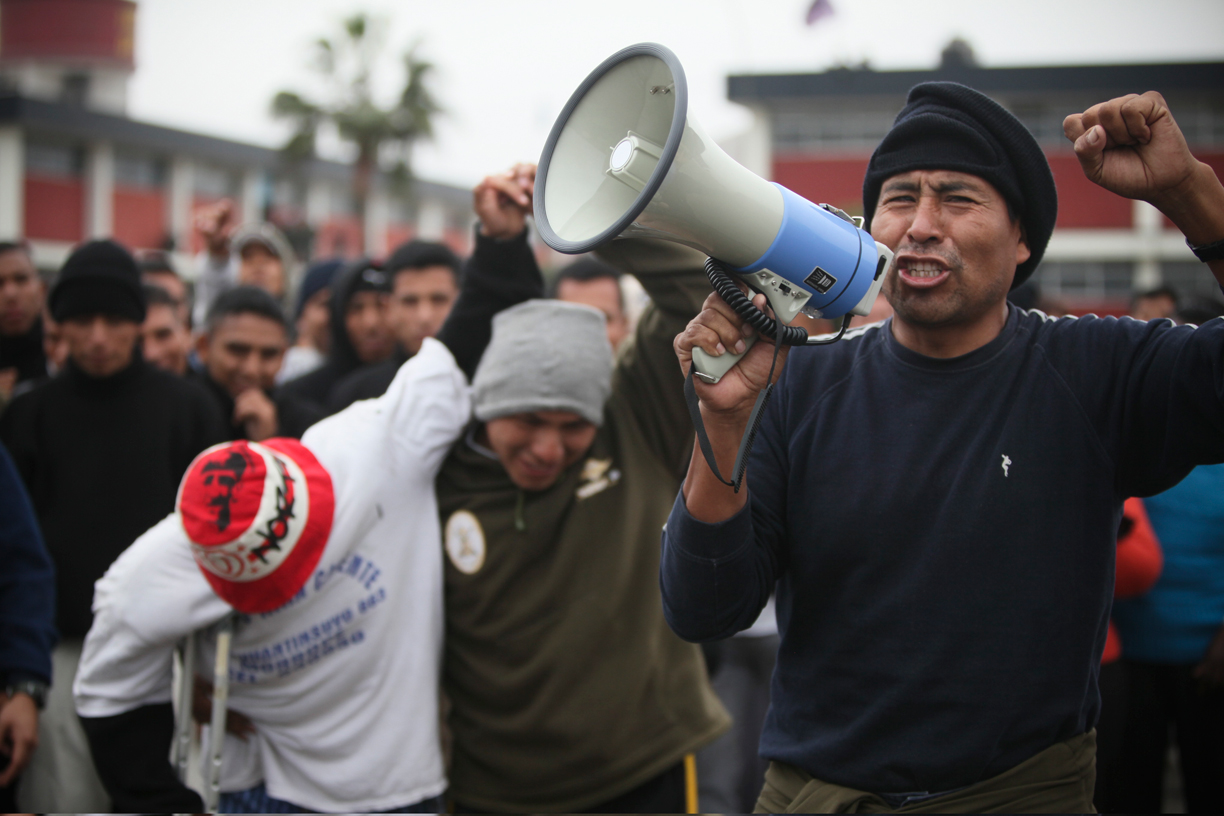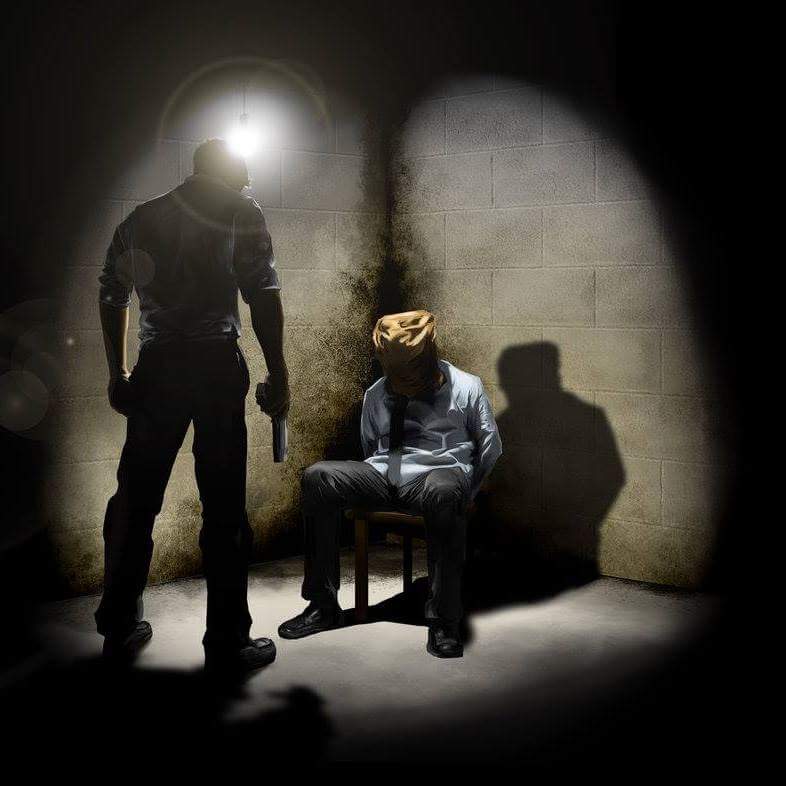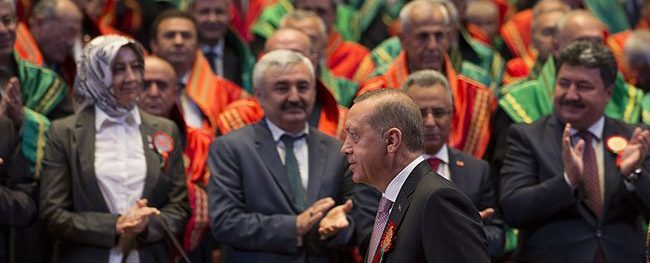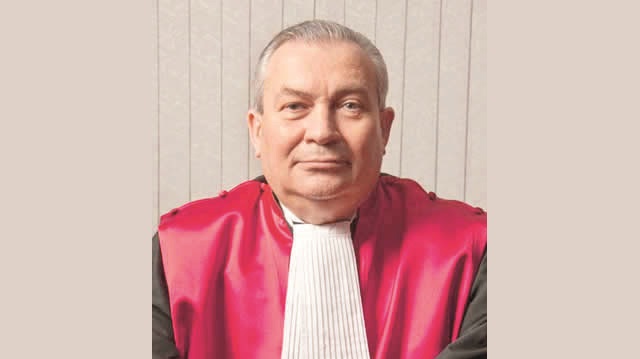By ABDULHAMIT BILICI
In appearance, Turkey has got all the institutions needed for a democracy: It has got a constitution, it has got a parliament, it has got political parties and elected members of parliament, and it has got “seemingly independent” judiciary. It has got “seemingly free” media. For a while now, however, these institutions have not been generating democracy and justice. On the contrary, they exist only to save and polish the image of an order where only one man decides for everything.
Prisons of the country are filled with journalists, academics, intellectuals and politicians, who are demonized just because of their opposing thoughts. On the one hand, the President of the Constitutional Court, who is supposed to oppose to all these attempts in the name of the Constitution which secures democracy and freedoms, is bowing down in front of the president. On the other hand, the members of the media, who are supposed to defend justice and freedoms and be the voice of the victimized groups, are acting like the three wise monkeys. Instead of obtaining the gratitude of the public by defending the truth and fairness, they are on the pull of guaranteeing an invitation to the receptions given in the palace, or to be taken on board the president’s airplane. Why? Why did all these institutions and those grand personalities disgrace and cancel themselves out one by one? What kind of a mechanism has rendered these institutions and personalities to set themselves to zero?
More or less, everybody knows how the media foot of this mechanism works and how the partially free media had been finished off, because all of these had happened in the very front of public’s eyes. It is not a secret how the pool media has been formed with the commission moneys taken from the business bosses loyal to the government; how the broadcasts of the opponent media are taken under control with “Hello Fatih!” type telephone instructions; how the media patrons are reprimanded by telephone calls; how the media institutions that continued to publicise opposing views have been silenced by means of the so-called trustees appointed by the government; and how the media members who tried to remain equidistant to all that have been appended to the pool media. There are of course some clues about how in perfect unison, all of hundreds of writers and newspapers publish exactly the same head-lines and dare to defend obvious lies such as the fake news of Kabataş and how the army of trolls, consisted of thousands of people are being directed, but the actual stomach-churning details of this mechanism will certainly be revealed in future.
In the field of politics, it is more or less known how the names who were once part of the opposition such as Kurtulmuş, Soylu, Bahçeli, Destici are cowed into submission and changed their views with a 180 degree turn, but surely there will be some sickening details which we will learn later.
It is blatantly obvious how the judiciary has been exploited in order to silence Demirtaş, HDP’s leader who had become prominent with his influential opposition. Knocking out Baykal with the blow of a video recording, using the stick of judiciary as a threatening weapon for Kılıçdaroğlu, the promoted Turkish-style Presidency and by-passing the parliament with KHKs (emergency law decrees) are all parts of the same game.
Yet still, what kind of a mechanism is rendering the judiciary subservient to the orders of a one-man-rule? How on earth does the president of the Constitutional Court, Zühtü Arslan, who used to be known with his views promoting freedoms, forget all the thoughts he was advocating just yesterday and take the position of “order arms” in front of the president?
The Example of Peru describes us
While looking for an example which shows that the institutions holding up the democracy exist only in appearance and their actual functions have been cancelled out, I came across with the case of Peru in Latin America. Peru entered into the literature of political science as a striking example where a leader made a coup against its own government (autogolpe=self-coup) and captured all the authority under his monopoly. Regarding this aspect, some people compare the July 15 coup attempt, which deactivated the opposition and paved the way for the one-man-rule in Turkey to autogolpe of Fujimori in 1992. The most striking aspect of the Peruvian case, which has not been underlined so far is the methods that Fujimori had used to deactivate the indispensable institutions of democracy such as the judiciary, the parliament and the media.
As it is the case in Turkey today, there were judges, courts, political parties and a lively media in Peru. However, none of them were carrying out the duties they are normally expected to carry out in democratic regimes.
The reason behind all this; the reason why judges were not behaving like judges, why journalists were not acting like journalists, why opponent politicians were not performing like the opposition were understood when Fujimori lost his ruling power and escaped from the country. The revealed documents shockingly displayed that the country had actually been ruled by the head of Peru’s intelligence service (Servicio de Inteligencia Nacional-SIN), Montesinos, not really by Fujimori himself.
Capability Montesinos
Montesinos started his career as an army officer and was prosecuted for selling confidential documents to the American intelligence. His full name was Vladimiro Lenin Ilich Montesinos Torres. His communist family had especially chosen him the name Lenin. During the leftist Junta rule in the 1970s, Montesinos was promoted to be the deputy of General Edgardo Mercado Jarrín, who was ruling the country as both Prime Minister and Chief of General Staff. Because of his clandestine relations with the American intelligence, the leftist junta dismissed him from the army and put him under detention for two years. Later, Montesinos has sought a career in law and pulled off getting a law diploma by means of fraudulence. After he had managed to enter the bar, he started to undertake defenses of drug dealers and soldiers involved in drug trafficking. When elected in 1990, Fujimori appointed Montesinos –who had also served Fujimori as his solicitor– first as his advisor, then as the head of the intelligence service.
Everything that Fujimori had done in the country was being conducted within Montesinos’s knowledge. However, when everything has been spilled out during the court hearings, Fujimori said that he knew nothing about many things that his intelligence chief had done on behalf of his name.
In order to bring the opponents on their knees and gain the loyalty of the officials at critical positions, Montesinos had developed some successful methods. He was taking them under his control by either intimidation or promising them high positions in the government or by recording their private lives to blackmail them or sorting their problems with the bureaucracy. Meanwhile, Montesinos concocted a system of bribery and managed to deactivate the checks and balances of the seemingly existing democracy by buying off journalists, politicians and members of the judiciary. Normally they say that bribery has no documentation. In the system that Montesinos had set off, however, he made out receipts for every bribe he paid. Everyone he bribed was signing a paper dictating the conducts he is going to carry out in return. Montesinos was also video recording the moments of these contacts.
How was the wheel of the absolute rule spun?
People who later examined these documents when they are revealed learnt whose support was needed to destroy the democracy from within; what had to be done to buy off these people and the price of each of those individuals.
According to the Peruvian tariff, the highest bribe had been paid to the media, especially to the TV companies. The next came the politicians, who were followed by the members of the judiciary. The bribe paid to an owner of a TV channel, for example, was a hundred times more than the amount paid to a politician. The reality, spilled out by these bribery records, was showing that the media –particularly the TV channels, which have the highest impact in influencing the society– was regarded as the most critical institution used for destructing the democracy.
“Information is like a medicine, we cannot survive without it,” this chief intelligence officer of Fujimori was saying. He was tapping the telephone communications of both the opponents and the supporters. In his room at SIN, he was watching the live recordings of the presidential palace, the parliament, court rooms, city centres, airports, and many secret spots. He was using death squads against the low-ranking officers, but was considering to bribe the high-ranking ones as more cost-effective. In order to keep their subservience continue, he was making the bribery payments by monthly installments, instead of paying in a lump sum. He filmed himself saying, “This is only a small retribution of our help for each other,” while he was bribing an executive of a TV channel.
His biggest slush fund to buy off the loyalty of individuals at critical positions was coming from the uncontrolled budget of the SIN. Between 1990 and 2000, when Fujimori and Montesinos were ruling the country together, the budget allocated to the SIN increased by 50 times. More than the two-thirds of this budget was conveniently used for such purposes. He was not obliged to give account of his expenditures, and what is more, he was also able to receive unrecorded transactions from the Ministry of Interior and the Army. He was also accumulating money from illegal activities such as grafting public tenders, gun-running and embezzlement.
Bribing not only the opponents but also his own PM
The money paid to politicians in bribe was changing between $5 and $20 thousand per month. He was bribing not only the opponent politicians but also the proponents. For example, during the court hearings, the last PM of Fujimori, Federico Salas, confessed that he received an extra monthly payment of $30 thousand from Montesinos. There were many opponent politicians who accepted to transfer to Fujimori’s party in return for a bribe.
Bribes given to the Constitutional Court and members of other high courts were changing between $5 and $10 thousand per month. These amounts were three or four times more than their monthly salaries.
The bribes given to the press directors were also striking. It has been revealed that the SIN had paid $1 million in bribe to the director of Expresso newspaper, and $1.5 million to a newspaper called El Tio in a duration of 2 years (in monthly installments of $60,000).
Controlling the TV Channels was the most critical issue
The state TV channel was already under control of Montesinos. He was determining the broadcast policies of the remaining 5 channels by means of bribe payments. He was paying the highest amount of bribe ($1.5 million per month) to Channel 4. What is more, Channel 4 and Montesinos had officially signed an agreement about controlling the editorial of the whole of the news hour. In total, he was paying $3 million per month to 5 TV channels and was keeping the editorial control of all the news related to critical political issues.
On one of the videos, he was telling that he had watched all of the news broadcast in the channel and prepared a report about it to its owner. He was even offering the service of SIN agents as researchers. Apart from the direct payments, he was also using the advertisements of the governmental companies as bait for the media. He was helping to solve the legal problems that the media faced with, while giving houses or cars as gift to some prominent names. Favours like finding works for spouses and providing support for their children to have an education abroad were among his methods to buy influence.
As the head of the intelligence service, he was the decision maker about promotions of army officers. Only those who bid loyalty to him and Fujimori were able to be assigned to higher positions. For the most part, not those who were competent and worthy for the job, but those who were weak and replied their orders with “Yes Sir!” were shining out. All of the high-ranking commanding officers were appointed by, and had somewhat connection with, Montesinos.
Blackmailing with hidden cameras
Apart from giving money in bribe, the most effective method he used for both the military and the other areas was blackmailing. SIN agents were placing hidden cameras in entertainment places and, with the videos filmed by these cameras, he was very easily bending the targeted persons to his will.
He was wearing out the very few journalists, who showed the courage to criticize the government on marginal newspapers and magazines, by denouncing them as “terrorists, beasts, or traitors” on front pages of the press he was controlling.
He offered to pay $19 million in bribe to the owner of a TV channel which was broadcasting programs criticizing the government. When the TV owner rejected the bribery offer, his citizenship was revoked by the government and he lost all his possessions.
Fujimori attained the public’s support with his success in two fields: Capturing Guzman, the leader of the Shining Path terrorist organization, who caused the killing of thousands of people, and the other was putting the very bad economy in order. During his initial rule, the inflation rate decreased from 7000 % to 10 %. In 1992, he carried out a self-coup against his own government, closed down the parliament, suspended the Constitution and started to rule the country with governmental decrees. He was charming the public with his firm and unyielding stance against the terrorism. Thus, he won the 1995 elections he entered under these conditions. In 2000, he was supposed to convince the parliament to overcome the constitutional prevention of being re-elected for the third term. He controversially won the elections, but had been able to remain in office only for 3 months.
The downfall of Fujimori was triggered by a TV channel that he had given importance and tried to buy off through bribery. This small TV channel that had managed to remain out of his bribery network, ignited the fuse that blew out the once seemingly imperishable tyranny. It was seen in the video, broadcast by Channel N, that the head of the intelligence service, Montesinos, was giving $15 thousand to the opponent MP Alberto Kouri, and in return, he was telling the MP to leave his party and start supporting Fujimori. In another video recording, he was giving promise of paying an extra $10 thousand per month to the member of the Constitutional Court and the Head of the High Election Council. As a result of these broadcasts, Fujimori fled to Japan. In Peru, he has been charged with crimes of bribery, murder and violating the constitution. But, because Japan rejected extraditing Fujimori, he stayed in Japan. The head of SIN, Montesinos, too, escaped from the country. However, he was captured in Venezuela, brought back to Peru and taken to court. Together with him, a total of 1600 people from among the judges, politicians and journalists, who had taken place in his bribery network, have also appeared before the court.
There were two reasons why he was filming the people he was bribing: First, to use these recording against anyone who would turn against him. The second, to prevent Fujimori to dismiss him from his post. By means of these films, he could instantly destroy the head of the state. It is alleged that he had about 20 thousand of such film recordings.
In his defense statement, Montesinos claimed that he is a patriotic person and he did all he had done to protect his homeland against the terrorists. However, it has been revealed that he had more than $200 million in foreign accounts. The Peruvian prosecution determined that Fujimori had siphoned $600 million in total.
Most of these schemes, plotted and conducted in Peru, must be very familiar for those who live in Turkey today. There is no doubt, when the lid will be lifted, all the dirty tricks, the bargains done with dark powers, siphoned up moneys under the pretext of love of homeland and religion, will come to light. And perhaps on the day when everything will be revealed, it will be understood that the 17-25 December corruption case, caught intelligence agency (MIT) trucks, “Hello Fatih!” type telephone instructions to the media, embezzlement of precious lands and properties, the 1 million TL worth Mercedes car given to the head of Religious Affairs, Hayrettin Karaman’s fatwa (religious permission) claiming that corruption is not burglary, forming a pool media by means of public tenders are actually only the tip of the iceberg.



